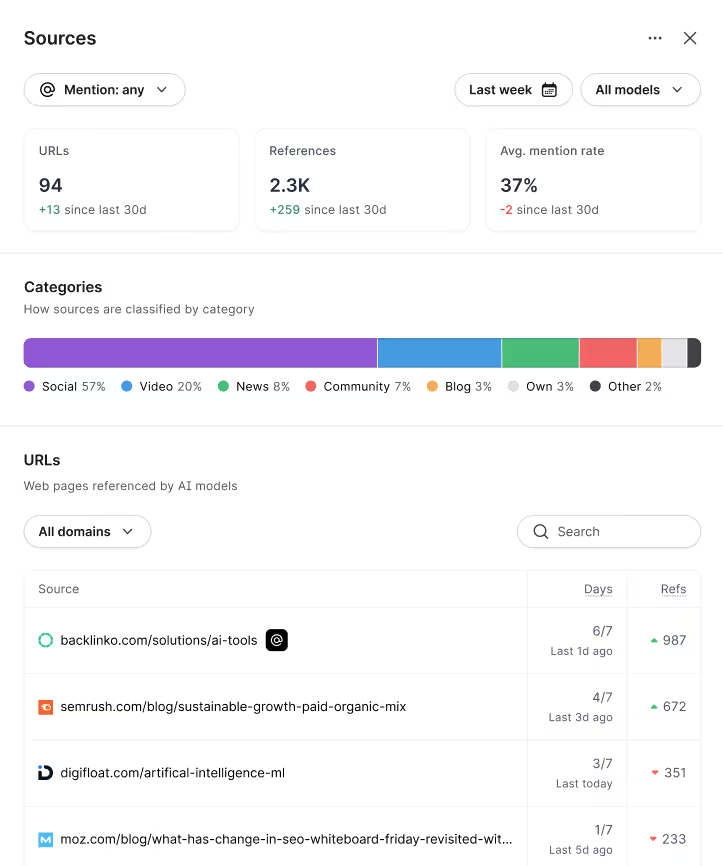This article is the second article in our ongoing research series on AI Search.
Our last post explained how Gemini, the AI model behind AI Overviews (AIO) and AI Mode (AIM), creates fan-out queries. If you missed that one, I highly recommend reading it, as it sets the stage for what we’re diving into now. Fan-outs can heavily impact AIO results.
This time we are zooming in on AI Overviews and its sources.
We wanted to understand what kinds of URLs show up in AI-generated answers and what it means for content visibility in the age of AI Search.
Finding 1: AI Overview spots are limited
The Gemini in AI Overviews is pretty selective. Before you see the usual top 10, you will get a smaller list of selected URLs:
- On average, AIO shows 8 sources per response.
- Half of the time, it sticks to 7 or fewer.
- Only 2.7% of AIOs go over 25 sources.
- In some cases, there can be even more than 36 sources!
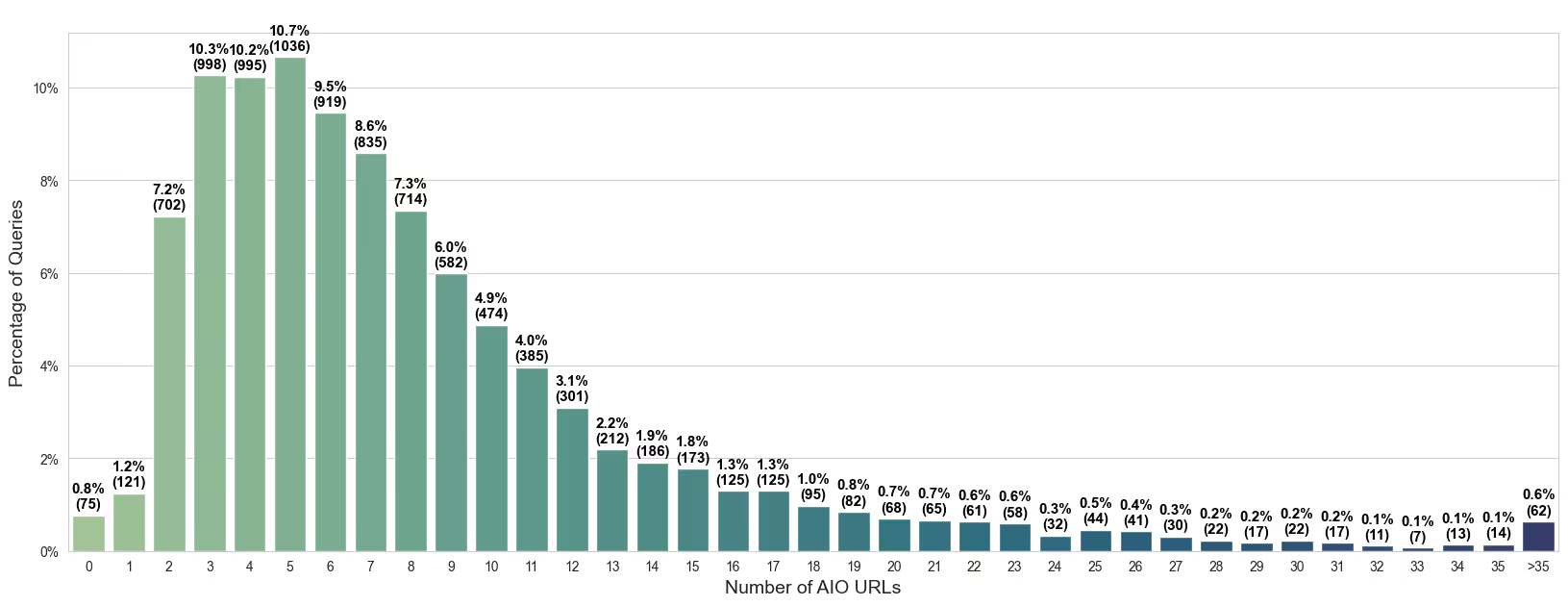
Getting on this list will be quite difficult. The model appears to select a focused, curated set of URLs. But let’s dig deeper.
Finding 2: Top 10 ranking is just a start
Ranking high in the SERP increases your chances of being included in AIO.
However, this does not mean that there is no chance of getting in, even if you are in position 50+. It’s a tiny chance, but hey! Better than nothing.
If you are a “glass half-full” type, you might even say that your chance of getting in front of people increased!
On a serious note, 70% of the sources come from the top 10 organic results. It’s important to note that this applies not only to the original query but also to the related, fan-out queries.
That’s not a coincidence.
Google’s AI clearly prefers to build on what the other algorithm (the one responsible for ranking) already considers “high-quality” or, you know… "helpful".
And we shouldn't be surprised. If you have a refined index of all the world's content, it would be a waste not to use it.
Even if they are not using it directly, they might be inspired by it. One way or another, ranking high looks like a key.
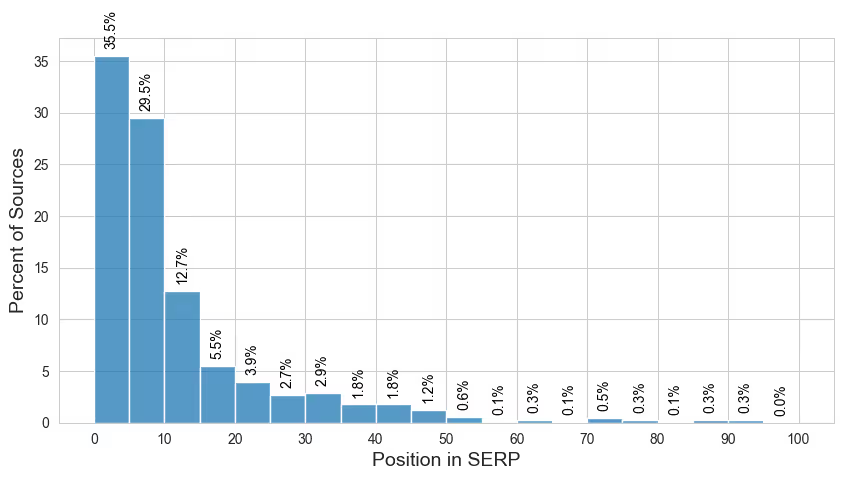
Finding 3: There are two types of sources in AI Overviews
In the fan-out article, we introduced the concept of core keywords.
Keywords that appear more often than others. We see similar behavior in sources.
Some sources are more “stable” than others. We call them core sources.
- Core Sources: frequently reused URLs that appear across multiple responses for the same query.
- Non-Core Sources: appear only once and often don’t come back.
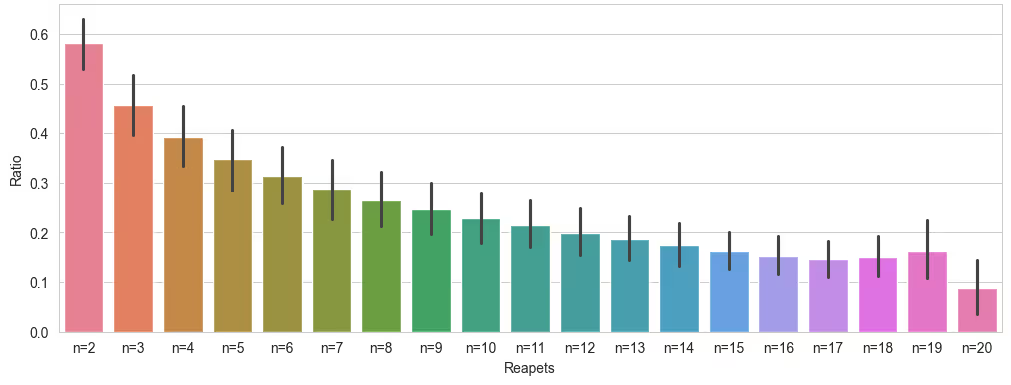
A group of core sources is quite “elite”. On average, only about 9 to 12% URLs re-appear in multiple queries.
Honestly, at this point, I’m not sure about the “why” behind it.
One theory is that juggling sources could provide more complete answers. On the other hand, I have a theory that sometimes Google doesn't care about the sources at all.
If all pages in the top 10 are optimized and provide similar content, does it matter which page AIO lists as the source?
From the search user's perspective, probably not (more on this in my next article about AI Overview results volatility).
Finding 4: Core sources outperform non-core sources
To identify core sources, we ran tests across two different time spans (one day and one week).
Why?
We wanted to learn if and when the results are always the same (cached), or always different (more on this in my next article about AI Overview results volatility).
In both tests, core sources are similar and outperform other sources. To put it simply, they rank higher.
Yet another proof that “old-school” SEO remains important for AI results.
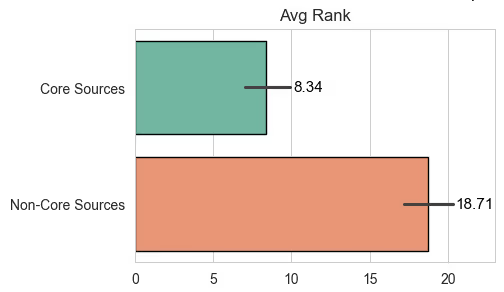
Finding 5: Authority and semantics are important
When it comes to domain score, which is Surfer’s internal authority metric on the same lines as domain rating and authority, the difference between core and non-core sources is not so visible.
And it makes total sense!
In such a select group, it is unlikely for Google to include domains with low authority.
Authority is important, but it does not constitute a core source.
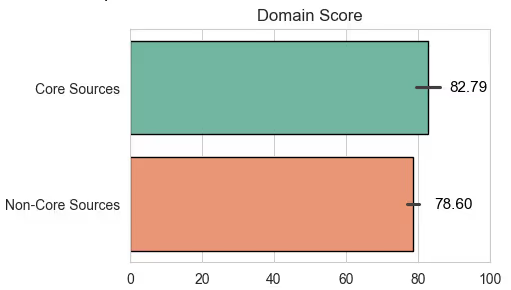
Core sources have stronger semantic alignment with the query.
Both the page titles and the slugs have better semantic alignment with the query.
It may not be huge, but it’s statistically significant!

Finding 6: AIO without sources is a thing!
It’s very rare, at least for now.
In less than 1% of cases, AIOs skip sources.
When? These are usually super simple or obvious queries, such as definitions or common knowledge, where the model can rely on its built-in knowledge ("What is water?").
Hints on this can reveal the exploit discovered by Mark Williams-Cook and his team.
If you don’t know, in this exploit, Mark found that Google classifies queries into eight categories:
- Short facts,
- Bool,
- Reason,
- Instruction,
- Comparison,
- Definition,
- Consequence,
- Other (with a lot of Commerce keywords).

Short facts and Bool (Yes/No type question) are especially interesting.
Firstly, when the answer to a query is short, people are unlikely to visit your site anyway.
AIO response is enough. Second, if the query is based on common knowledge or trivia, Google may not provide a source.
Now it’s less than 1% of queries, but we should pay attention to this number.
This fits perfectly into the pattern of Google holding back more and more users inside its systems.
From displaying the current time to showing dollar exchange rates, to providing flight information, to offering simple responses without sources. It’s a steady progression of increasing interaction within Google properties.
How to increase your chances of getting into AI Overview sources?
Here are 3 ways you can get into AIO answers.
Embrace “tradition”
Remember about “traditional” SEO and rank high organically.
Don't let anyone tell you that SEO is no longer relevant. Just this year, SEO has been dead around 10 times.
Obviously, under SEO, there are a lot of actions and tactics.
From content to technical, to off-page SEO. You can’t abandon it. Yes, this also includes semantic SEO!
Here are a few ways you can rank in AI overview answers with traditional SEO practices.
Remember about fan-outs
If you didn’t read my previous article on query fan-outs, do it now.
What you can see in AIO is an effect of both query SERP and fan-out SERPs.
As our data shows, the rule of “rank high” is applicable for all queries, including fan-out queries!
Track core sources
Use core sources to find best places for mentions.
Like in “traditional” SEO, optimizing for LLMs comes in different flavors. One of them is off-page.
But rather than getting links, you may be more interested in gaining mentions.
But how to find them?
Tools like Surfer’s AI Tracker will help you with that.
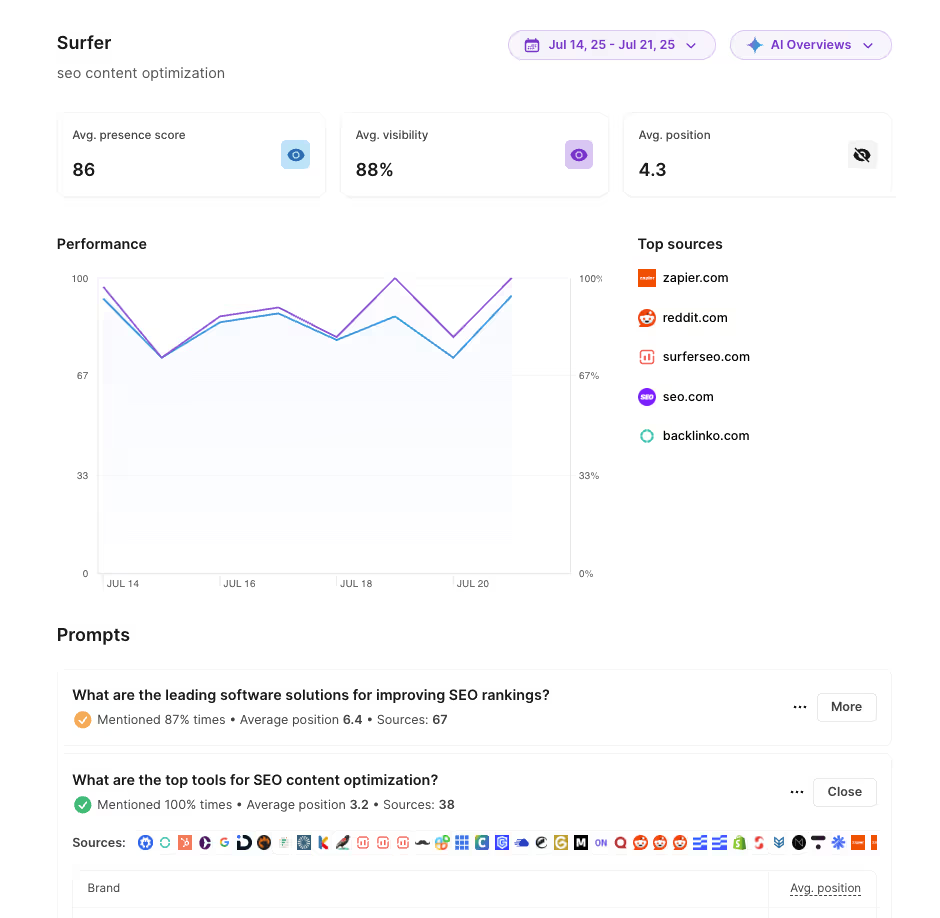
Securing mentions in related URLs and domains will help both in the short term and long term.
A short-term impact will support grounded results in the search index. The long-term impact strengthens your presence in training data.
The more frequently your brand is mentioned in the dataset, the higher the chance of appearing in LLMs' suggestions.
AIOs aren’t just tossing in random links.
The system is structured, competitive, and, what’s important, dynamic.
Core sources dominate, but they don’t stay static. Content quality and smart optimization matter.
Here's a sneal peak into the next release of Surfer's AI tracker.
